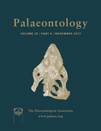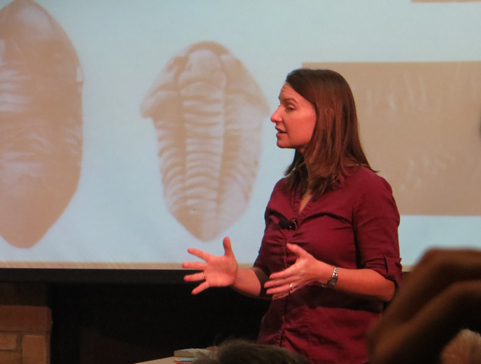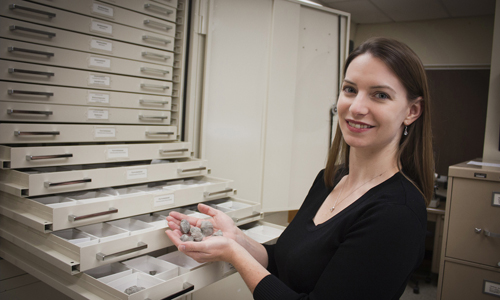First in a Series on Macro-Evolution
Darwin and his successors wrote the first chapters on evolution by looking at small changes in species over relatively short periods of time, usually described as natural selection. Scientists developed the Modern Synthesis to describe gradual evolution following the discovery of the DNA molecule, and it has been the consensus in evolutionary theory for more than 60 years.
But the bigger picture on evolution—and biodiversity—was written by the earth and its history of geological change over very long periods of time. Looking back into time—way back, Dr. Alycia Stigall suggests, provides a much better perspective for studying macro-evolution.
And the modern way of looking at evolution is in need of a rewrite, she says. She also explained her research at Science Café (video below).
Thinking of the evolution of species exclusively as “population genetics” is far too simplistic, says Stigall, Associate Professor of Geological Sciences. In a new article in a special edition of Palaeontology, she argues for a broader evolutionary theory that accounts for large-scale environmental changes such as plate tectonics, sea level changes and climate change over periods measured by tens of thousands of years.
 Understanding the multiple factors involved in the creation of new species is “critical to developing a complete understanding of evolutionary processes,” she writes. “The Modern Synthesis primarily emphasized evolutionary patterns and processes affected by gene flow and its interruption over short timelines. Consequently, the Modern Synthesis cannot incorporate the fundamental ecological and spatial attributes of species and their environments fully.”
Understanding the multiple factors involved in the creation of new species is “critical to developing a complete understanding of evolutionary processes,” she writes. “The Modern Synthesis primarily emphasized evolutionary patterns and processes affected by gene flow and its interruption over short timelines. Consequently, the Modern Synthesis cannot incorporate the fundamental ecological and spatial attributes of species and their environments fully.”
Where Darwin focused on populations, macro-evolution looks at changes at or above the species level. “Speciation—the process by which new species evolve—is the core of macro-evolutionary theory,” Stigall writes. “The fossil record provides the unique opportunity to study speciation patterns and mechanisms across multiple clades (groups of organisms) in deep time, which studying snapshots of speciation processes in modern organisms cannot accomplish.”
Stigall provides three case studies that “emphasize the centrality of large-scale environmental changes acting over long time scales in driving speciation and thus major patterns in biodiversity, and thereby relegate micro-evolutionary processes to a more limited role.”
“Although the details of the case studies differ, they share several broad patterns. Most significantly, the primary controls on speciation in all three case studies were external, environmental factors. Abiotic factors (tectonics, sea level, climate change) were the dominant controls on speciation, but external biotic factors (species invasions, ecosystem turnover) were also prominent. Notably, these external biotic factors relate to entities in the economic hierarchy that occur at higher levels than the organismal/population level where micro-evolutionary influences occur,” she says.
“The secondary controls on speciation across the three cases also have commonalities,” she writes. “The relative breadth of a species’ niche impacts species survival and adaptability during intervals of environmental change. Species with broad ecological niches display reduced level of niche evolution and higher levels of persistence across disturbance intervals. This suggests that species-level emergent characters may play a key role in specialization dynamics.”
Upcoming in the series: Macro-Evolution: The Case of the Late Devonian Biodiversity Crisis


















2 Comments